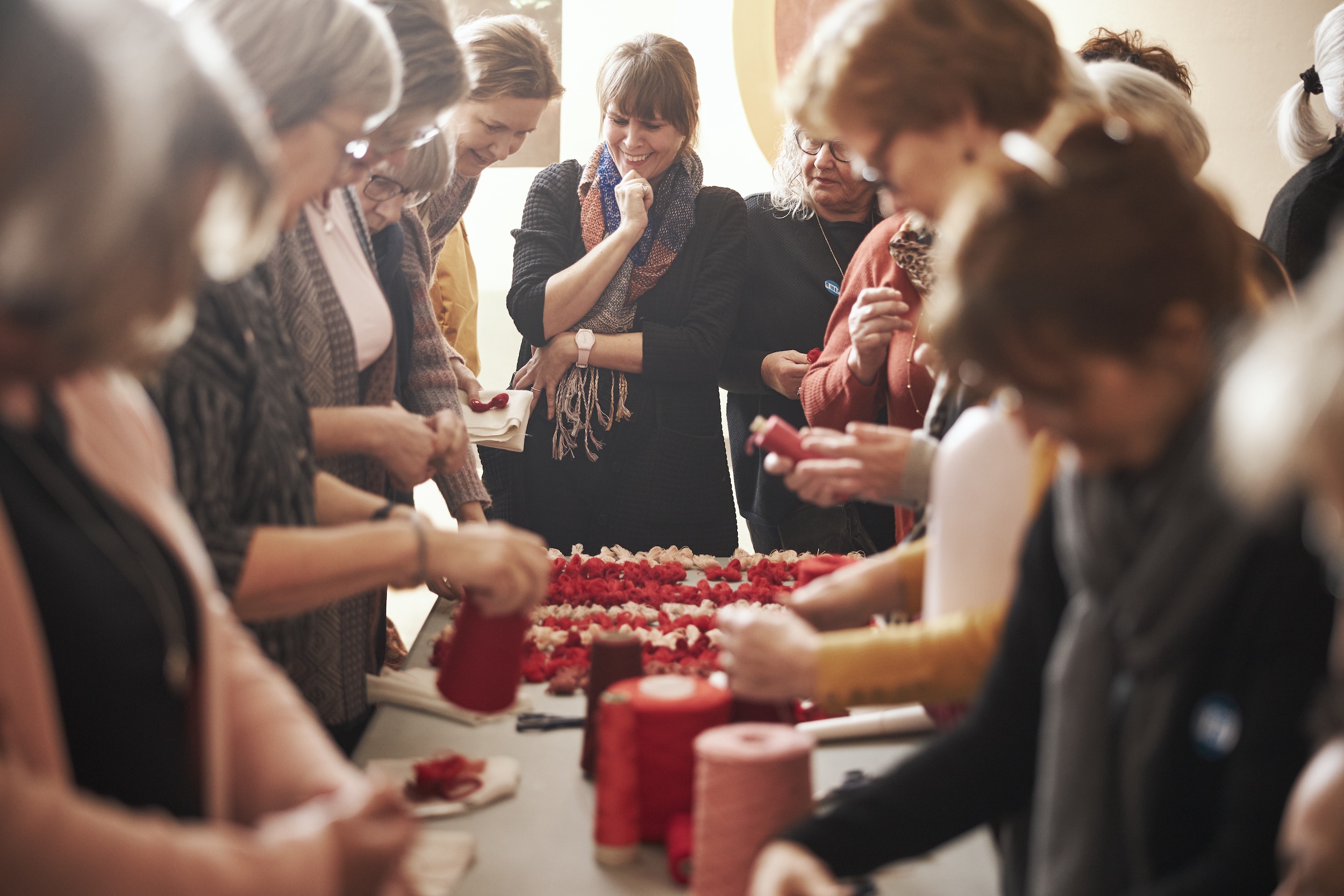In early March 2022, Trapholt launched the Facebook page Dataspejlet (Data Mirror) dedicated to an upcoming co-created work of art. Just a few days later, 500 members had signed up. The project was launched at a virtual event in late April, and in just two days, 1,200 embroidery kits were snapped up. At Trapholt, we were thrilled to see this degree of interest in the project, which continues a years-long focus on co-created art at the museum. This interest did not just come out of nowhere. It is the result of many years’ dedicated effort to develop ideas and learn from processes and participants in previous projects, driven by a constant desire to do better and to achieve our goals.
Trapholt’s projects have always aimed to build communities and stimulate creativity. Over the years, we have found that we are also capable of engaging in interesting and unconventional dialogues about difficult topics and of creating artistic form through hand-crafted processes and the materiality of textile.
Trapholt has been engaging in co-created art projects since 2015: Maskernes Monument (Monument of Stitches) with Isabel Berglund (2015–16), Waste Time Home Party with Anja Franke (2016–17), Tingsted (Thingstead) with Rasmus Bækkel Fex (2019–20), Stitches Beyond Borders with Iben Høj (2020), LIGHTHOPE with Hanne G and Rasmus Bækkel Fex (2020), Among the Trees with Tina Ratzer (2021) and Dataspejlet (Data Mirror) with Astrid Skibsted (2022).
This essay introduces Trapholt’s current project Dataspejlet and the background of the three latest co-created works of art: Stitches Beyond Borders, LIGHTHOPE and Among the Trees, all of which were carried out in 2020–21 while the Covid pandemic sent Europe into repeated lockdowns.
In the article, the term ’craft’ is used to refer to projects, where professional makers or artists work on equal terms and in equal exchange with amateur craft makers to create a unique work of art. The term ‘craft’ refers both to the craft or artisanal processes and the unique professional product.
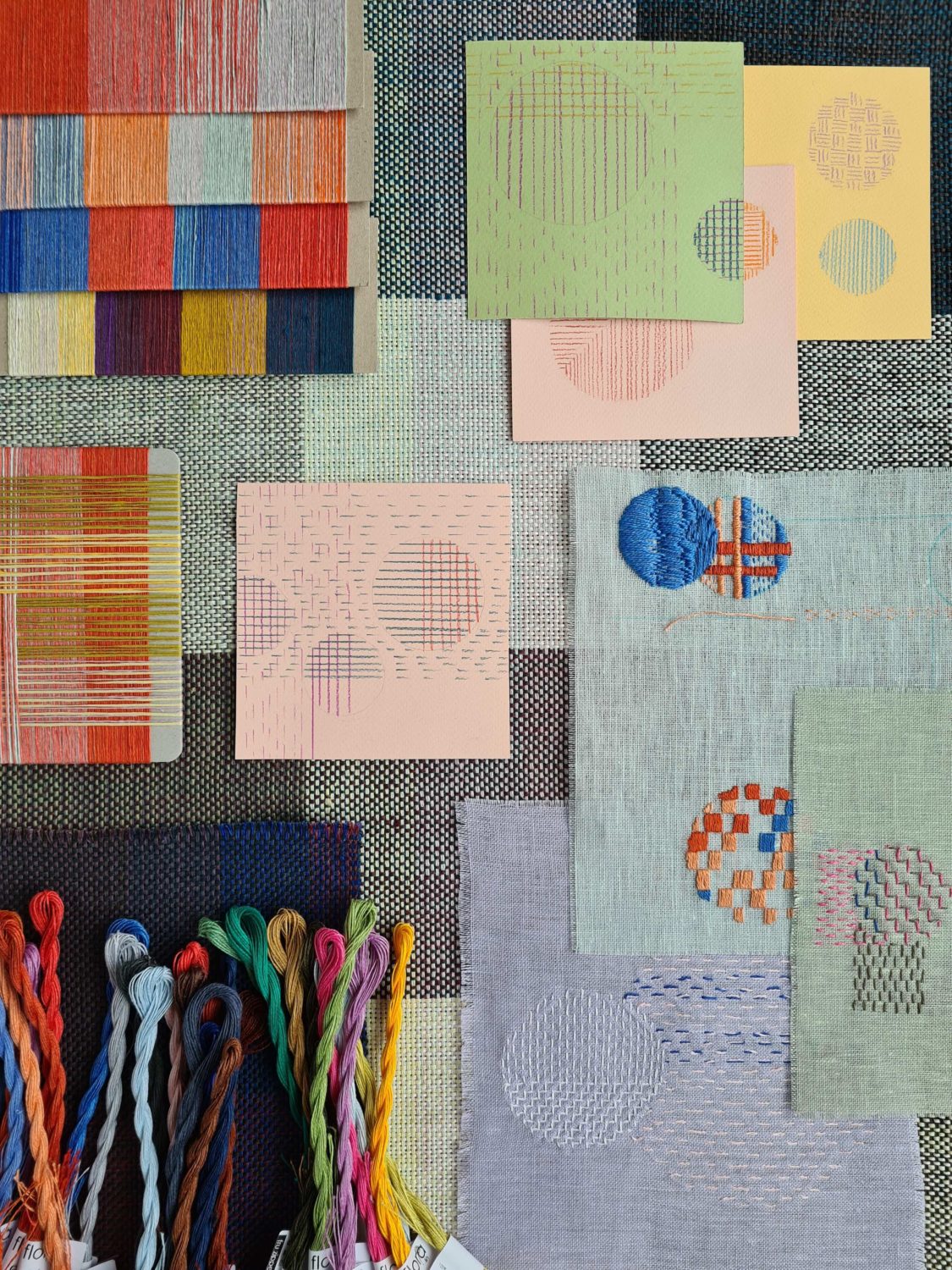
DATASPEJLET – DATA VISUALIZATION 2022
Dataspejlet is a co-created work of art based on a collaboration between Trapholt and textile artist Astrid Skibsted. The piece takes shape during spring and summer 2022 and is presented at Trapholt in November 2022. The participants in Dataspejletdownload their Google or Facebook data and have them transformed into an embroidery pattern on Trapholt’s website. The end result is a 6-metre-tall installation consisting of 16 lengths of woven textile placed in a circle and encircled by 4 large transparent textiles featuring the many personal data visualizations. The woven textiles are created by 16 weavers’ circles throughout the country. The same colours are used in the woven textiles and in the embroidered contributions, which are created by 4–500 participants.
The data are embroidered in three colours in addition to white, which is used for topics the participants do not wish to share. The woven textiles may be regarded as an image of the sprawling web of digital traces we all leave behind and of the network of online relations we are entangled in. The many contributions zoom in on the traces and footprint each of us leaves behind online. The data visualizations do not represent the ‘truth’ but an abstract depiction of the traces we all leave behind and an invitation to engage in a dialogue about what this means for our lives and our future.
Dataspejlet was developed in autumn 2021 in collaboration with 24 previous participants in Trapholt’s co-created art projects. During the process, the artist, Trapholt and the participants tested creative ideas and concepts. The process reached a low point in November, when we found ourselves unable to get the concept and form to come together. We had been debating how we connect to the world. After a few weeks’ break, data and data traces emerged as an obvious theme. The binary system of weaving can be viewed as a precursor of computer technology, with straight-stitch embroidery echoing this binary language. Everybody talks about data, but for most of us, it is a distant, elusive phenomenon. Few people have actually had their hands on the data we leave behind on Google and Facebook or fully considered the consequences they have for our lives, now and in the future. Through a craft project, Trapholt wanted to address data in material form and establish conversations and reflections that would not otherwise take place. Finally, we arrived at a concept with a clear connection between materiality, form and topic.
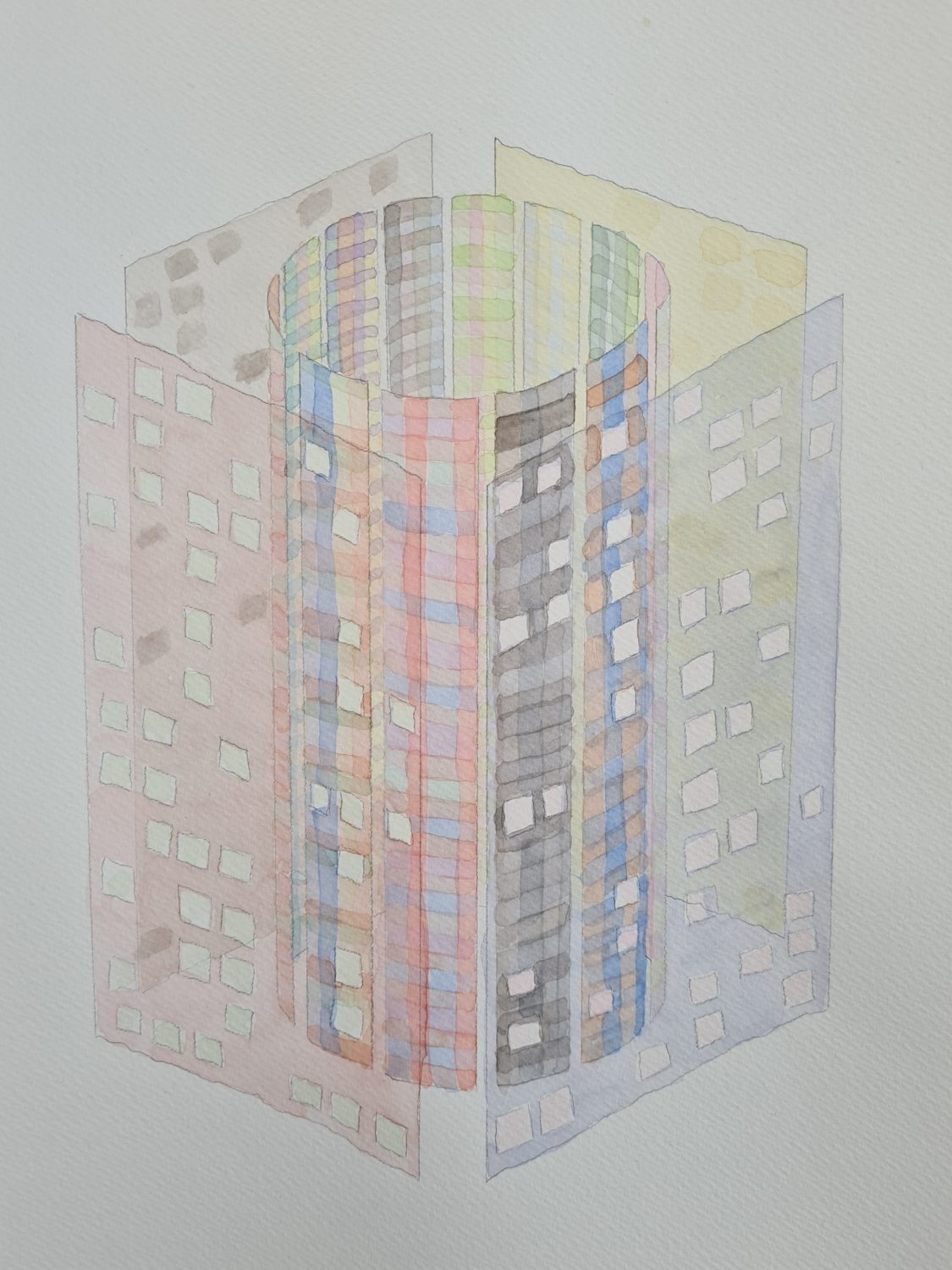
Community
After the Covid pandemic, it has become a key ambition for Trapholt to help build communities and stimulate conversations. Instead of hosting face-to-face meetings exclusively at Trapholt, the project therefore partners with seven libraries throughout Denmark. The museum also encourages participants to form local communities, where private individuals or, for example, cafes, act as craft ambassadors or craft salons aimed at including the local community in the project. Instead of only holding talks at Trapholt, we organize virtual talks about data, data protection, craft psychology and creative embroidery with associated conversation menus designed to stimulate dialogue about the individual topics. The talks can subsequently be streamed and used whenever it is convenient for the communities that emerge. Because the face-to-face encounter with the artist is so essential, Trapholt has also arranged for Astrid Skibsted to visit both the partner libraries and Trapholt in order to give as many people as possible a chance to engage in a direct dialogue with her about the project.
The Facebook community has proven to be a useful tool for information, questions and shared learning. In a month it developed into a big and active forum with more than 1,000 participants. The participants form communities for people to meet and embroider while using the project’s conversation menus to initiate good dialogues. Here, people can find ideas for new approaches by seeing what others do, and the participants are good at asking questions, answering and inspiring each other.
What connects the participants in Trapholt’s co-created art projects is an interest in learning a craft. That target group spans across age groups, social classes and educational backgrounds. They are united by what they DO (craft), not who they ARE (a particular target group). The unique dynamic of previous co-created works of art at Trapholt springs from the participants’ personal craft, thoughts and experiences. The simple principles defined by the artist is the key to unifying the variation of expressions that are the source of the dynamic of the piece. However, participation requires the ability and energy to discover the project, the local partner library and so forth. With Dataspejlet, Trapholt has established a collaboration with Landsforeningen af VæreSteder, the national association of drop-in centres for socially marginalized persons. The purpose of this collaboration is to facilitate the inclusion of participants with diverse life experiences. Most of the 35 drop-in centres that are involved will receive a visit from Astrid Skibsted as a way of providing that extra nudge that might be needed to include their users in the project on the same terms as everyone else.

STITCHES BEYOND BORDERS – EMBROIDERING BORDERS
In 2020, Denmark marked the centenary of the reunification of Denmark and North Schleswig, the area now known as South Jutland. With the purpose of relating the reunification to our lives today, Trapholt invited textile artist Iben Høj to design a co-created work of art for the centenary that contained reflections on our current perception of borders. The goal was to create an artistic manifestation that would address the historic event and bring it into a contemporary context, both for the participants and for the guests who experienced it at Trapholt. The idea sprang from the fact that around the time of the reunification, women would use embroidery as a political manifestation of their national ties to Denmark.
Iben Høj defined the artistic framework in the form of the colour, materials and format of the piece as a whole. Her concept for Stitches Beyond Borders was based on old, faded Danish flags in a wide range of reds with delicate light areas, yellowed with age, which give an impression of history and lived lives. Hence, the participants used delicate shades of red in their embroideries.
Iben Høj often uses deliberate choices of thread to achieve the intended expression, and the craft tradition has a central place in her working process, as it did in this project too. The variety of materials lends the piece a sensuous expression and underscore the impression of the many different voices and hands involved in creating it.
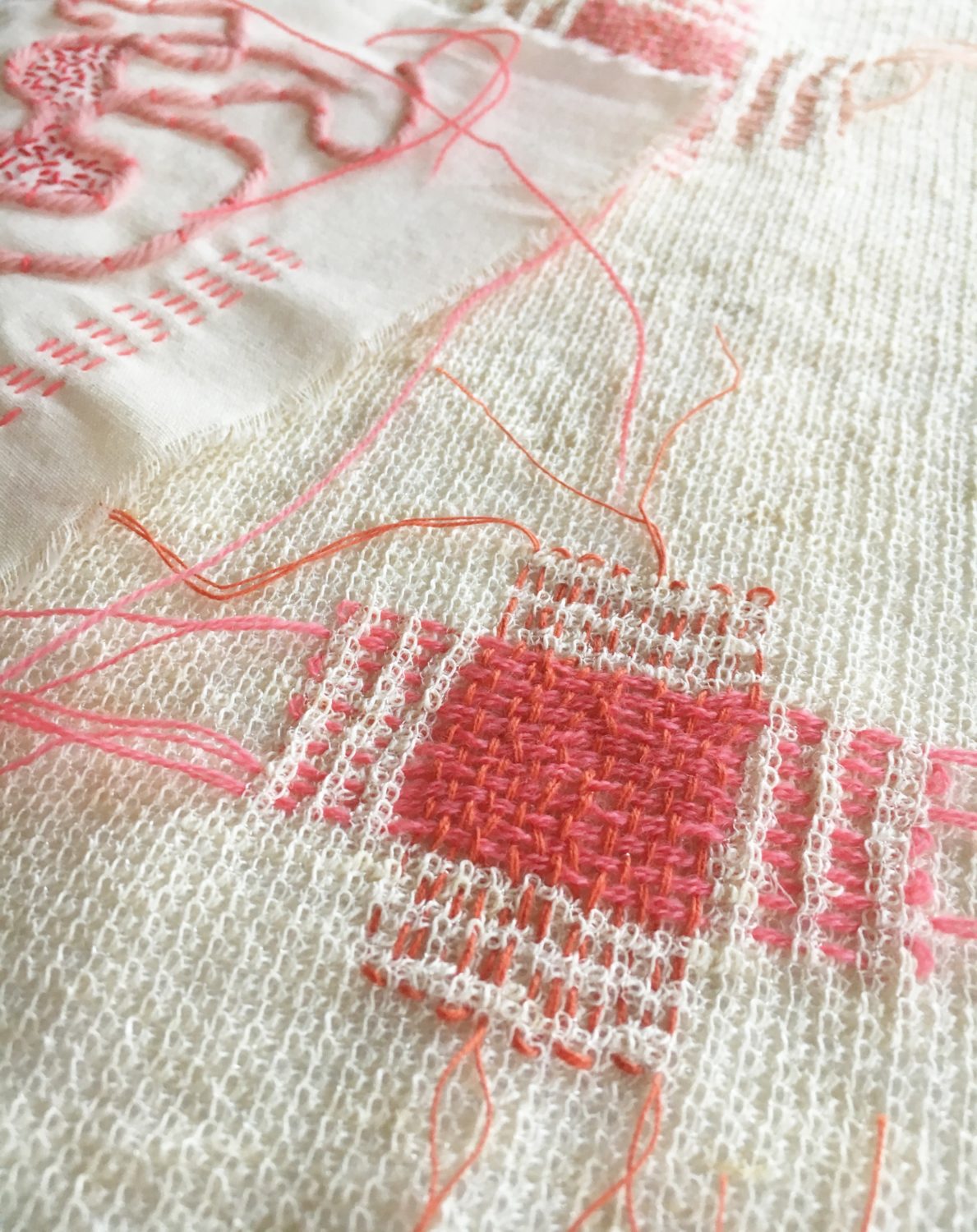
The floating, 6-metre-tall piece became a mobile, a weightless space in the museum space, consisting of textile, threads and sticks. With this mobile, Iben wanted to bring out the materiality and sensuous quality of the textiles. Viewers could move round these new spaces, taking in the multiple layers and embroideries. The consistent use of red threads tied the individual contributions into a coherent whole, where it remains unclear where one element ands and the next begins. The participants were all encouraged to make embroideries that could be viewed from both sides and to leave the loose threads.

Stitches Beyond Borders aimed to promote creativity, bring the reunification into a contemporary context and promote community-building. In addition to sold-out events, there was a lot of activity and a lively exchange of ideas on the project’s Facebook page. The finished work of was made possible by the spirit of mutual respect between participants and artist. The many hours of accumulated care and rich creativity that the participants brought to the project exceed anything Iben Høj could have achieved on her own. And similarly, the many individual embroideries by the 778 participants were enhanced by Iben Høj’s artistic framework, which ties the piece together into an original and coherent installation.
From January to March 2020, Trapholt held eight sold-out events with embroidery and talks on the reunification and the contemporary embroidery tradition. Trapholt co-hosted 10 local workshops with partners in the Region of Southern Denmark as well as a few events on Funen, in North Jutland and in Copenhagen. Many of the embroideries that the participants handed in had been titled and were accompanied by notes on the thoughts behind the personal contribution. This wealth of stories and perspectives on how we perceive borders today was so substantive that Trapholt not only exhibited all the texts but also featured them in an accompanying publication. The publication also included an essay by Professor Birgit Eriksson of Aarhus University, whose accompanying research found that many of the participants found their involvement to be a positive experience, and that there is a potential for including a wider range of voices and establishing additional spaces for dialogue and conversation among the participants.
Stitches Beyond Borders began in early January 2020, and the process was almost completed before Denmark went into Covid lockdown in early March. Thus, a few Covid-themed embroideries were included in the exhibition, which had its official opening in June and was subsequently recognized with an award from the Danish Arts Foundation.
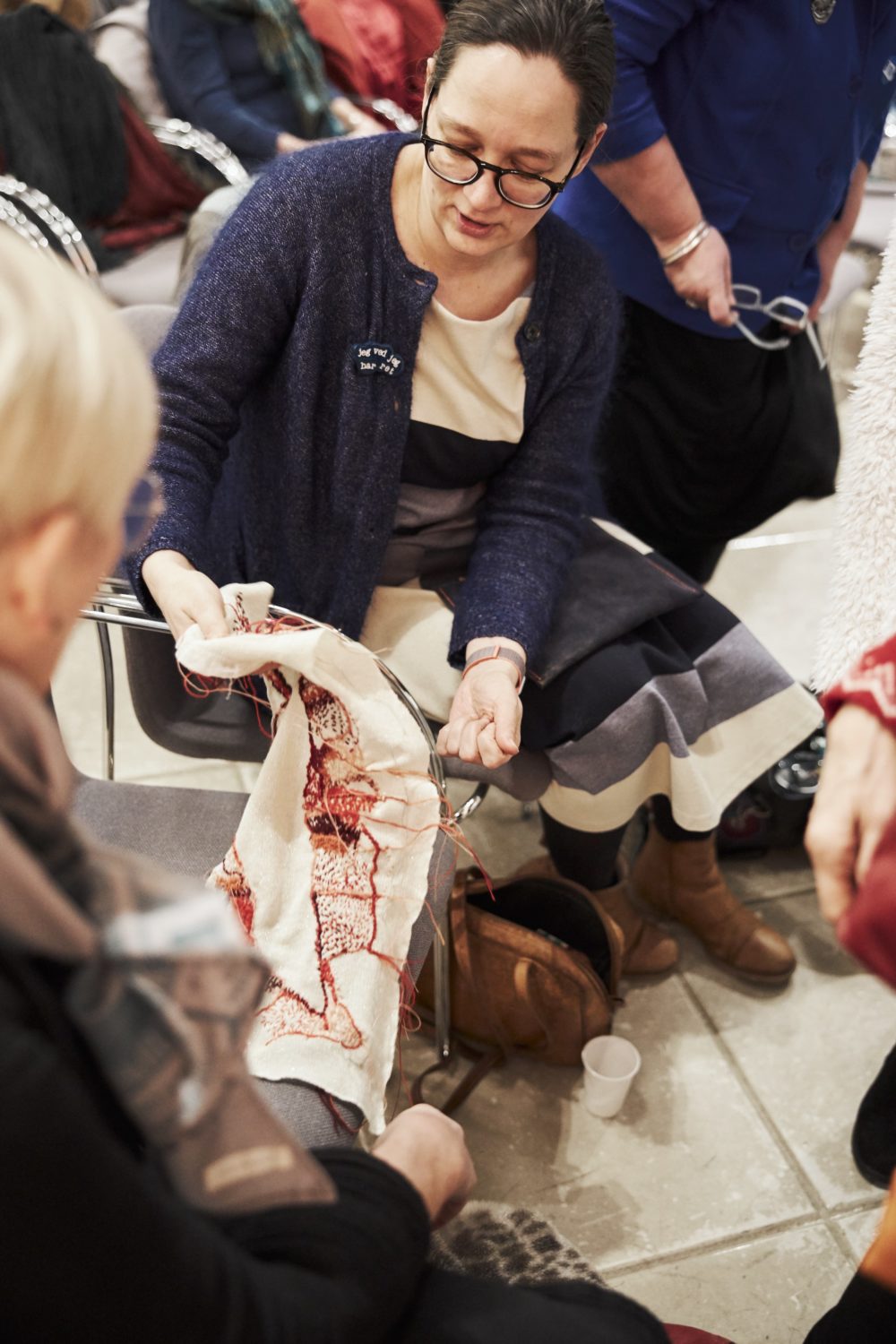
LIGHTHOPE – CROCHETING HOPE
The two major Covid lockdowns had a significant impact on Trapholt. The museum never shut down. Instead, we decided that this was the time to deliver for the Danish people by offering hope, meaning and community through art and craft. Over the course of just three weeks, Trapholt completed a process that normally takes many months: together, cabinetmaker Rasmus Bækkel Fex and textile artist Hanne G created the concept for the art project LIGHTHOPE, which was initiated on 1 April and was ready for the audience when the museum reopened in late May 2020.
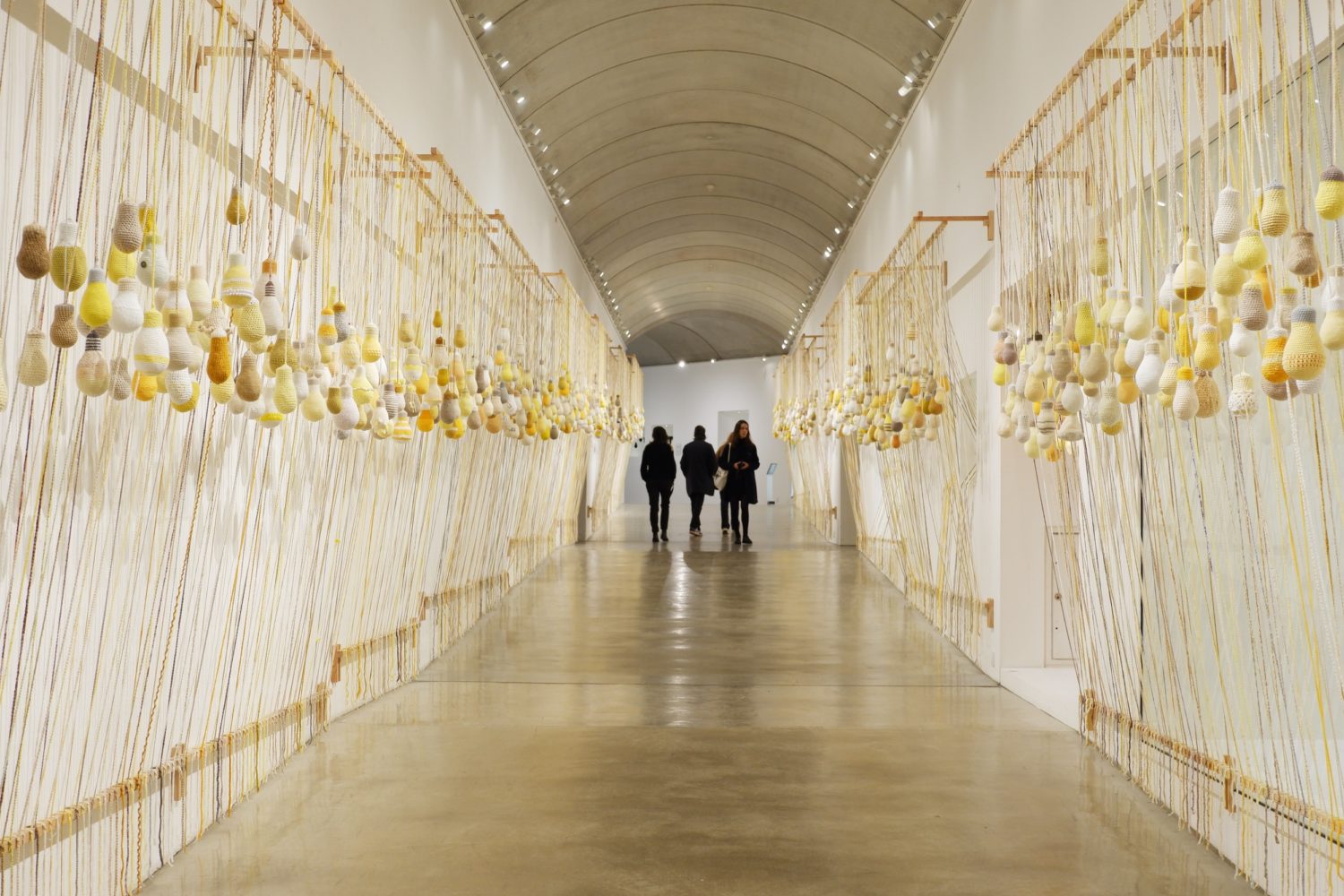
Hanne G developed a co-creative textile concept based on crocheted ‘light bulbs’ in shades of white, beige and yellow – colours that many may have lying around from previous craft projects. The ‘socket’ was made from cardboard toilet paper tubes, and the participants were encouraged to use left-over yarn. The bulbs conveyed the notion that even dark times include bright moments. The pear-shaped bulbs also refer to fruit that grows and ripens.
In April and May, Rasmus Bækkel Fex constructed a tunnel or pergola that ran the full 70 metres of Trapholt’s main axis, symbolizing that we were merely going through a phase, and that there is light at the end of the tunnel. The crocheted bulbs were hung on the wooden construction with dangling threads, which might bring to mind the Norns from Norse mythology, who spin out the thread of human life at the root of the Yggdrasil, the tree of life, or perhaps Penelope of Greek mythology, who weaves as she waits for Odysseus to return.
From the launch of LIGHTHOPE to Trapholt’s reopening in late May, 987 participants from all over Denmark handed in 1,629 crocheted bulbs. The bulbs could be handed in at Trapholt or at 27 drop-off locations established in private backyards throughout Denmark by people volunteering via the Facebook group. The Facebook group rapidly grew, and several thousand members contributed images, reflections and ideas. They also self-organized projects that involved crocheting bulbs in different formats, such as earrings, keyrings, garlands and so forth. They shared yarn and crochet hooks, and some made free crochet kits available from their backyards.
Throughout the project period, everyone could watch the hanging of the piece via Zoom and take part in virtual events and crochet clubs, where they met each other and the artist. Some of Trapholt’s Zoom events had more than 800 participants. Since the official opening was virtual due to Covid restrictions, Trapholt created a music video to offer virtual attendants a full experience of the piece.
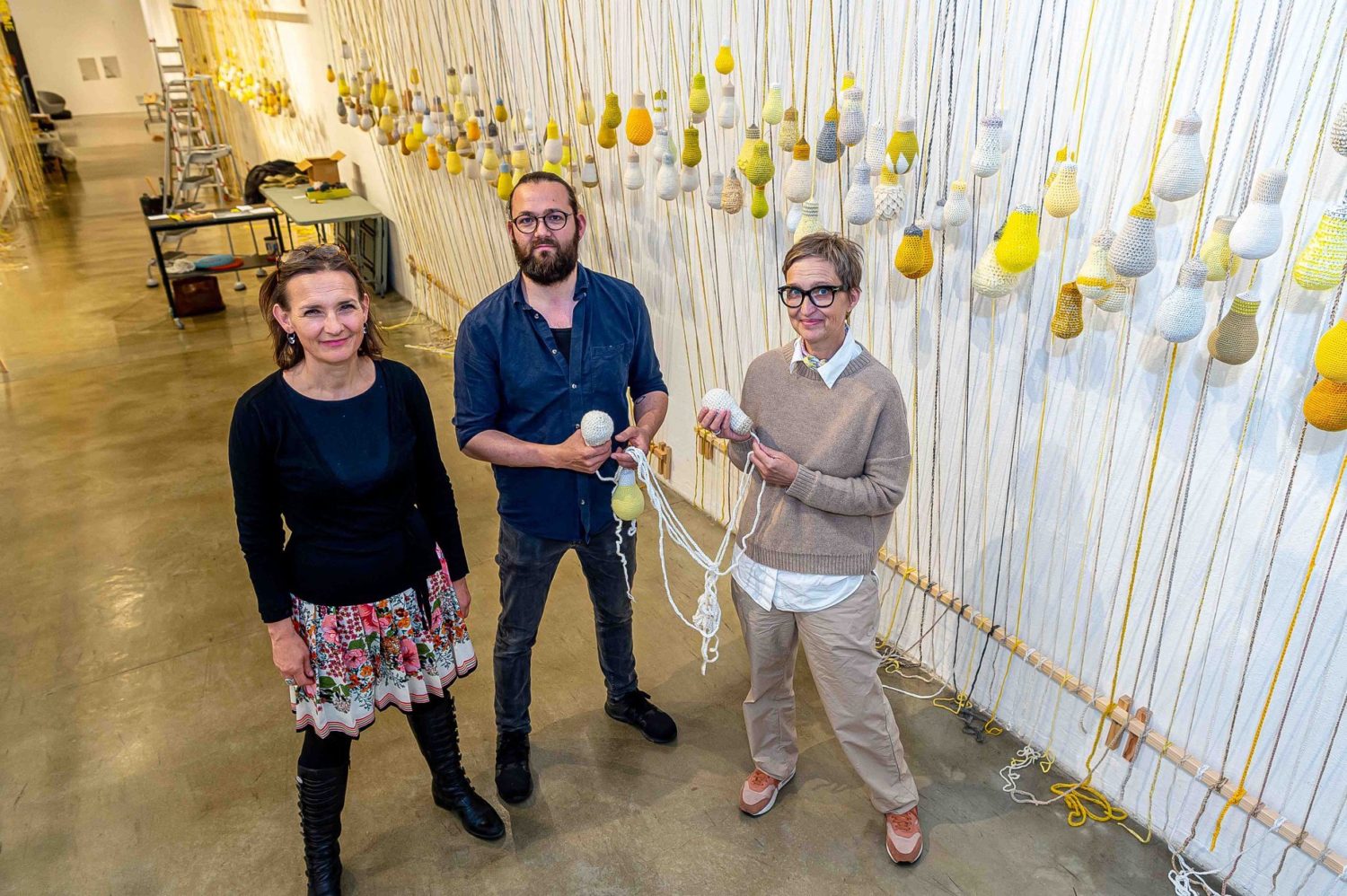
When they registered, the participants shared positive experiences and hope in connection with the lockdown. Many mentioned a sense of community, calm, reflection, kindness and nurture. Small, everyday aspects had been allowed to take on more prominence, and people appreciated daily life. Many enjoyed the sense of being part of a well-functioning society andexpressed a sometimes rare appreciation of political system. One participant said they had made up with a neighbour after a seven-year conflict. Several people mentioned climate benefits and felt that it was time to rethink, accompanied by reflections on whether we might return to the old normal, or whether we would be able to reduce the stress in our everyday lives by bringing the appreciation of nurture and reflection with us into the future. Many expressed their joy over the creative community that LIGHTHOPE had created.
Thanks to LIGHTHOPE, Trapholt was far from closed during the lockdown of spring 2020. The museum was open, only in a different way than normally. The overwhelming interest in the project is testimony to the basic mission of any museum: to contribute to a strong and engaged society for all.
AMONG THE TREES – QUILTING THE CLIMATE CRISIS
In the summer of 2020, our thinking at Trapholt was that while the Covid crisis would pass, the climate crisis persisted. Thus, in summer and autumn 2020, Trapholt and Tina Ratzer developed the project Among the Trees. At this time, as the pandemic had receded, we wanted to create a hand-crafted space that addressed and sparked reflection and dialogue about the continuing climate and biodiversity crisis. As in previous, similar projects at Trapholt, we also wanted to challenge the participants’ creativity and to promote community-building. To that end, Trapholt had planned workshops around the country to provide settings for people to meet and to boost local creative communities.
Among the Trees was launched in January 2021, just as Denmark went into another Covid lockdown. Hence, scheduled face-to-face workshops, nature walks and events were modified into virtual formats. More than 500 people took part in the big opening workshop via Zoom on 30 January 2021. In early February 2021, more than 300 participated in a workshop on plant-based dyeing that took place simultaneously in Tina Ratzer’s kitchen and in the participants’ private kitchens.
The February workshop included contributions from a nature ranger, a craft psychologist, librarians and a climate activist. The result was a two-hour-long interactive TV programme, where the participants worked simultaneously in their own kitchens, contributed, asked questions and shared their finished products. In mid February, the planned forest walks in the Triangle Region were transformed into a large virtual forest bathing workshop, where more than 300 participants logged in from their local forests around the country. Nature rangers from the Triangle Region guided the participants through sensory exercises and experiences that they could simultaneously follow in their own local forest.

Facebook served as an important community forum where 1,400 followers shared thoughts, projects, ideas and materials and connected with Tina Ratzer, who offered comments and answered questions on a daily basis. A weekly workshop, Tips og tricks med Tina (Tips and tricks with Tina), with in-depth talks about quilting and the project in general consistently attracted between 60 and 150 participants.
As a key element in the project, participants were invited to reflect on whether there was a particular tree that held special meaning for them. They were then asked to select a leaf from this tree and create a patchwork block based on it, using either a physical leaf or a picture of a leaf if they did not have access to the actual tree. Trapholt’s point was to visualize our individual relations to trees that we may not be consciously aware of, but which represent a special bond, for example a tree related to special memories, sensory experiences or attitudes. By encouraging the participants to choose a leaf and write down the story behind it, we wanted to visualize relationships to a diverse range of trees as an image of a world of biodiversity.
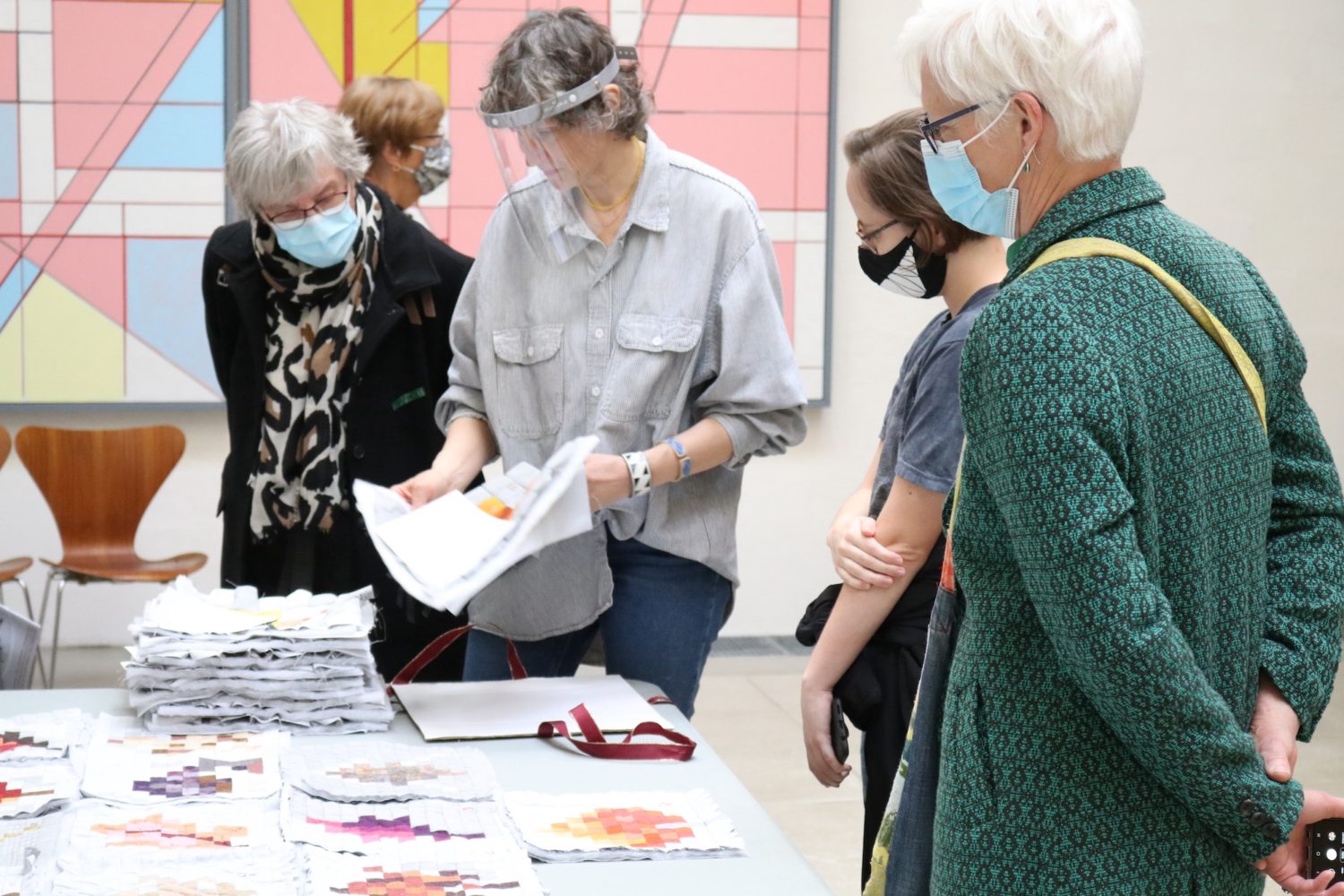
The key focus in Among the Trees, as in all Trapholt’s projects, was the relationship between artist and participants. On the one hand, the resulting work should clearly reflect Tina Ratzer’s defining vision; on the other hand, it was an essential quality of the piece that the participants engaged and expressed themselves in individual and creative ways. The colour scale was ‘harvest’, and participants could contribute two types of pixellated leaves on a material provided by Trapholt.
Among the Trees became a forest created by 740 children, young people and adults from all over Denmark. The forest consisted of leaves from maple, oak, beech, chestnut, lime, sycamore, birch, cherry, hazelnut, ash, elm, poplar, mirabelle, rowan, spruce, elder, willow, hawthorn and others. The participants’ relationships with their trees are shaped by recollections from childhood, from a place or of a person, a fascination with nature, climate, symbols, life cycles and craft. An evaluation found that most of the participants felt part of a community and found new inspiration for their craft and greater insight into nature. Quite remarkably, two out of three indicated that the project had a positive impact on their well-being during the 2021 Covid lockdown.
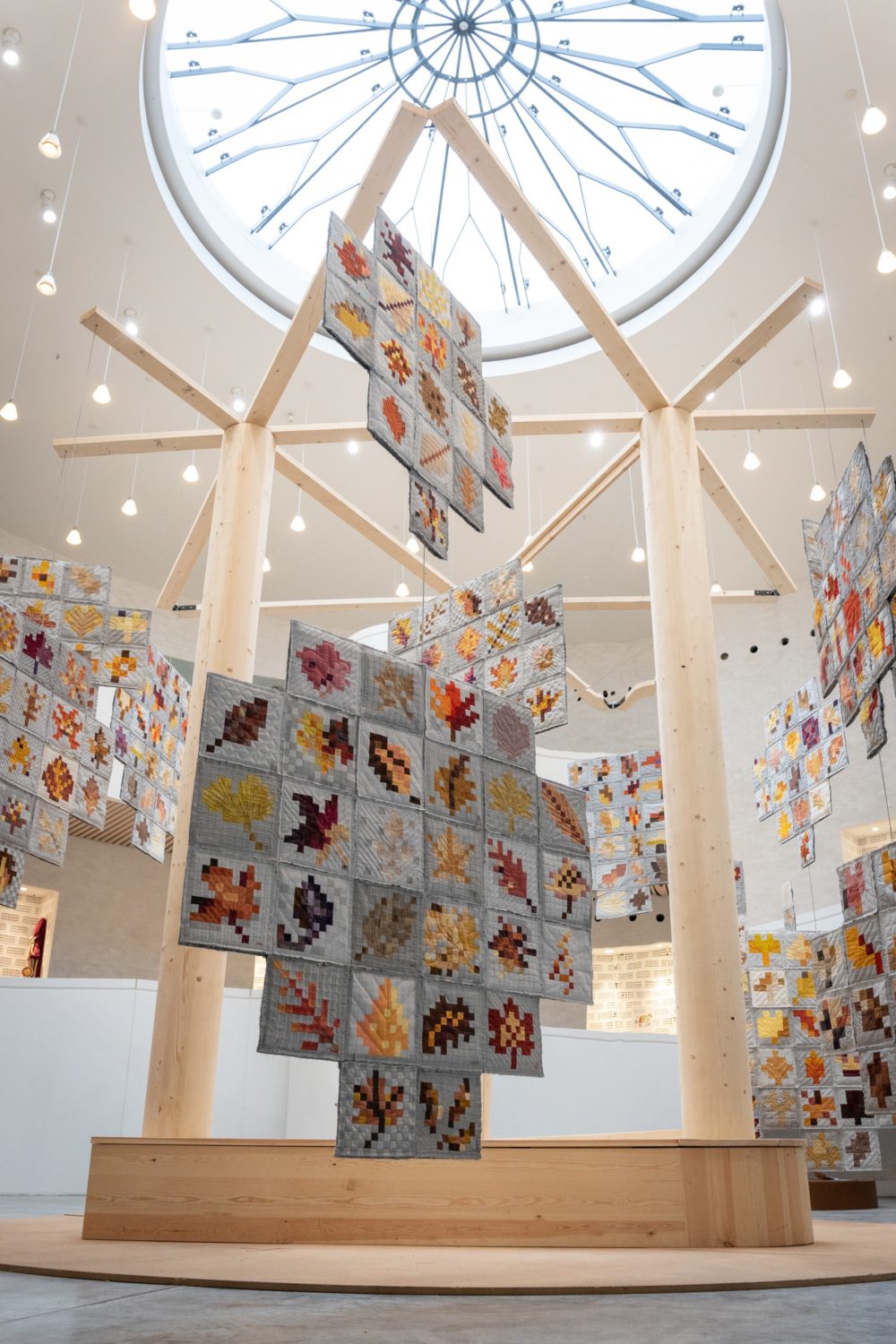
CRAFTVÆRK
Dataspejlet is part of the 3 ½-year research project CraftVærk, which is a collaboration between Trapholt, Birgit Eriksson, professor of Aesthetics and Culture at Aarhus University, and postdoc Tina Hove Sørensen. The project follows two co-created works of art, of which Dataspejlet is one, and receives financial support from Velux Fonden’s Museums Programme. Its purpose is to examine how co-created works of art change participants, museums, art and society.
One key topic of this research is the significance of the textile material that we all have detailed experiences with from our daily lives (Bryan-Wilson, 2019). Textile in Trapholt’s projects can be seen as an expression of creativity, which can be viewed as a relational phenomenon, where we move between continuity and renewal and where a range of existing materials, tools, institutions and normative practices enable an improvisational journey of discovery and new manifestations (Ingold, 2010; Tanggaard, 2013). From a new materialist perspective (Latour, 1996; Bennett, 2010; Dudley, 2013), as well as the project participant affecting the material, the material also shapes the participant. Tactile experiences help generate strategies for action (Petreca et al., 2014), which are reflected in the work itself (Shercliff et al., 2016) and are seen as an entry to building a more empathetic world (Shales, 2017). There are indications that craft in itself generates positive emotions, flow, meaning, mindfulness and increased intelligence (Kirketerp, 2020). In his book The Craftsman, Richard Sennett wrote that ‘who we are rises directly from what our bodies can do (…) the capacities our bodies have to shape physical things are the same capacities we draw on in social relations’ (Sennett, 2008, p. 290). Thus, what we create through craft is not just the tangible product. Both the possibilities and the difficulties of carrying out a craft help enhance our human relations.
These discourses and horizons of experience are at the core of Trapholt and Aarhus University’s research into the museum’s co-created art projects. Both novices and more experienced participants contribute with concrete craft pieces and their personal perspectives on the project themes. The combination of craft and participation gives rise to a particular potential for learning and changes, as the participants engage at a cognitive and creative level as well as in material and discursive exchanges. The really interesting question here is whether and how this happens and what works of art and relations can be created. The CraftVærk research project offers a unique opportunity to examine this question during the project period of 2021–24.
Sources
Bennett, J. (2010). Vibrant matter: A political ecology of things. Duke University Press.
Bryan-Wilson, J. (2017). Fray: Art and textile politics. University of Chicago Press.
Dudley, S. (red.). (2013). Museum materialities: Objects, engagements, interpretations. Routledge.
Eriksson, B., & Sørensen, T.L.H. (2020). Grænseløse Sting: Kreativitet, deltagelse og grænser i et broderet fællesværk på Trapholt. Trapholt.
Eriksson, B., & Sørensen, T.L.H. (under udgivelse). Negotiating borders in a participatory artistic embroidery project: Learnings from Stitches beyond Borders at Trapholt Museum for Art and Design. Journal of Aesthetics and Culture.
Gauntlett, D., & Twigger Holroyd, A. (2014). On making, sustainability and the importance of small steps: A conversation. Conjunctions: Transdisciplinary Journal of Cultural Participation, 1(1).
Ingold, T. (2010). The textility of making. Cambridge Journal of Economics, 34(1), 91-102.
Kirketerp, A. (2020). Craft-psykologi: Sundhedsfremmende effekter ved håndarbejde og håndværk. Mailand.
Latour, B. (1996). On actor-network theory: A few clarifications. Soziale Welt, 369-381.
Latour, B. & Weibel, P. (red.) (2005). Making things public: atmospheres of democracy. ZKM.
Latour, B. (2010). Steps toward the writing of a compositionist manifesto. New Literary History, vol. 41.
Petreca, B., Baurley, S., & Bianchi-Berthouze, N. (2015). How do designers feel textiles?. I 2015 International Conference on Affective Computing and Intelligent Interaction (ACII) (s. 982-987). IEEE.
Sennett, R. (2009). Håndværkeren: Arbejdets kulturhistorie: Hånd og ånd. Hovedland.
Shales, E. (2017). The shape of craft. Reaktion Books.
Shercliff, E., & Twigger Holroyd, A. (2016). Making with others: Working with textile craft groups as a means of research. Studies in Material Thinking, 14.
Tanggaard, L. (2013). The sociomateriality of creativity in everyday life. Culture & Psychology, 19(1), 20-32.

